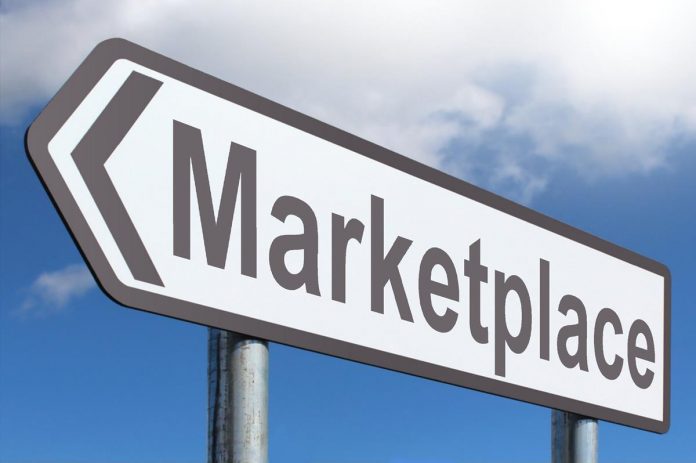Last Updated on February 25, 2024 by Ali Hamza
Putting together a range of components to build an NFT marketplace from the ground up is a challenging procedure. The significant milestones in the Top NFT Development Agencies of our NFT marketplace are listed below.
1st step:Perform in-depth market research
The first stage in building an NFT marketplace is to conduct extensive research on your target audience, significant competitors, and current crypto industry trends.. You must find answers to the following questions in order to gain a thorough understanding of the current global market situation:
- Who do you want to market your product to?
- What would be the major focus of your NFT Marketplace??
- Which features should you include in your NFT marketplace to provide the best possible experience for your users??
- What Blockchain platform is best for asset tokenization?
- What marketplace services do your competitors provide to their target market?
- What are the latest trends in cryptocurrency?
Step 2: Make an 8-Point Checklist.
After conducting thorough market research, you must begin by defining important market characteristics.. To gain an advantage over your competition, you should add the following elements in your NFT marketplace:
Sign-up
The signup process should be straightforward and painless. Users will use the “sign-up” option to create an account on the marketplace. Providing individuals with quick access to a variety of social media profiles could be a great way to boost visitor numbers..
Storefront
The storefront of the marketplace is a simple dashboard that encourages consumer interaction.. From pricing history to the amount of bids, it must provide every possible piece of information that piques visitors’ attention.
Advanced Lookup
This tool will assist customers in locating their preferred items and streamline the trade procedure.. Users will be able to find their favourite things using certain keywords without having to navigate the entire webpage if search filters are included.
Listings
Buy and Bid are two words that come to mind when you think of a
Users can utilise this functionality to buy and sell NFTs on the platform. The functionality also displays the current status of the bid as well as its expiration date.
Integration of Wallets
Non-fungible tokens should be transferable, receiveable, and stored via a wallet. You can also give your customers the choice of integrating their favourite wallets.
Ratings
Newcomers will benefit from a rating system that will help them rapidly locate the most popular and trending NFTs. The marketplace will rank sellers based on a number of factors, including previous NFT transactions and the number of postings..
History of trading
An NFT marketplace should contain a tool that allows users to track their whole transaction history. In addition, the feature must give information.
Work on the Development Process in Step #3
You’ll need to think about how the project will be technically performed after you’ve decided on the most crucial elements for your NFT marketplace… The construction of an NFT marketplace revolves centred on writing code with the right technology stack
Stack of Technology for Creating an NFT Marketplace
You’ll need to choose the correct blockchain platform, storage platform, front-end technology, and NFT standards to create an NFT marketplace..
Platforms for Blockchain
Complete the blockchain platform for the marketplace’s development. Some of the most popular Blockchain systems include Ethereum, Solana, Cardano, and Polygon.
Platforms for Storage
These are the B2b rating & review platform’s where NFTs will be held once they have been minted. Some storage platforms on the market include IPFS, Filecoin, and Pinata.
Front-End Development
You can use technologies like ReactJS, AngularJS, or Vue to build the front-end of your NFT marketplace.
NFT Requirements
The following are some of the most widely used NFT standards:
ERC-721 \sERC-1155 \sFA2 \sTRC-721
Step #4: Begin working on the user interface.
Designing an engaging user interface could be the most effective strategy to keep your users hooked on your NFT marketplace in today’s times, where decisions are made in the blink of an eye. The steps in the design process of your marketplace should include the following:
Create a wireframe
Wireframes are conceptual layouts that are used to design a website’s or app’s visual framework.
Style Guides to Consider
The style guidelines will show you how to aesthetically represent all parts of your NFT marketplace’s user interface.
Step #5: Put Your Marketplace to the Test and Launch It
After you’ve finished developing and designing the marketplace, it’s critical to run multiple tests to look for faults or functional flaws. The marketplace will go through a series of testing rounds during which many concerns will be fixed in order to ensure that it is fully functional. The marketplace will be open to the general public once all of the testing is completed.
Plan out your marketing strategy.
The purpose of developing a marketing plan is to attract loyal customers who would not only engage with the platform again but also become champions for it. You can use social media channels like Facebook, Twitter, LinkedIn, and Instagram to promote your marketplace. To improve the ranking, blogs can be used to publish SEO-friendly content.













